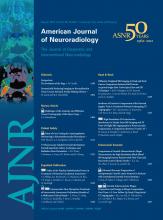Abstract
BACKGROUND AND PURPOSE: MRI markers of neuroaxonal damage in MS have emerged as critical long-term predictors of MS-related disability. Here we investigated the potential of whole-brain diffusivity and brain volume for the prediction of cross-sectional disability and short- to medium-term clinical evolution.
MATERIALS AND METHODS: In this multimodal prospective longitudinal MRI study of 54 patients with MS (87% under immunomodulatory therapy, baseline and follow-up at a median of 12 months), ADC histogram analysis, WM lesion load, BPF, whole-brain atrophy rate, MSFC score, and EDSS score were obtained. A total of 44 patients with no relapse at both time points were included.
RESULTS: At both time points, ADC histogram analysis provided robust predictors of the MSFC scores (maximal R2 = 0.576, P < .001), incorporated cognition and fine-motor skill subscores, and EDSS scores. Significant changes beyond physiologic age-related changes at follow-up were noted for ADC histogram markers and BPF. Stronger diffusivity alterations and brain volume at baseline predicted MSFC decline, as demonstrated by multiple linear regression analysis (mean ADC, R2 = 0.203; P = .003) and lower baseline BPF in patients with declined compared with stable MSFC scores (P = .001). Results were independent of intercurrent relapses.
CONCLUSIONS: Diffusion histogram analysis provided stable surrogates of disability in MS and proved sensitive for monitoring disease progression during a median of 12 months. Advanced neuroaxonal pathology at baseline was indicative of an increased risk for sustained progression during a median of 12 months, independent of intercurrent relapses.
ABBREVIATIONS:
- BPF
- brain parenchyma fraction
- CI
- confidence interval
- EDSS
- Expanded Disability Status Scale
- GM
- gray matter
- MSFC
- MS Functional Composite
- 9-HPT
- 9-Hole Peg Test
- PASAT
- Paced Auditory Serial Addition Test
- PBVC
- percentage brain volume change
- TWT
- timed walk test
- WMLLperc
- WM lesion load volume as percentage of total WM volume
- © 2012 by American Journal of Neuroradiology












